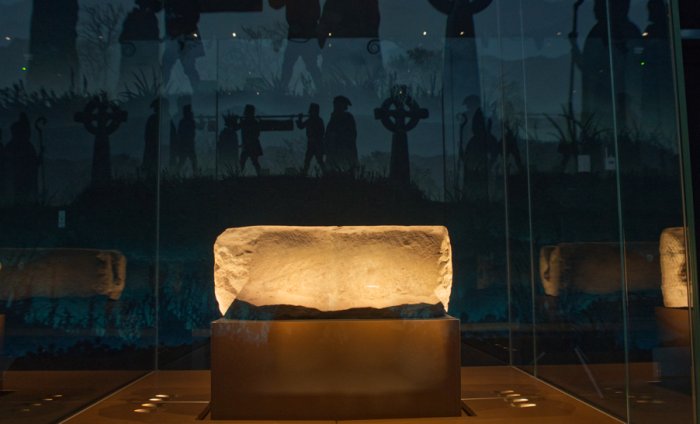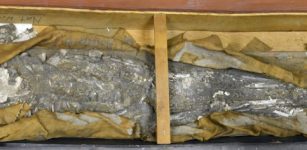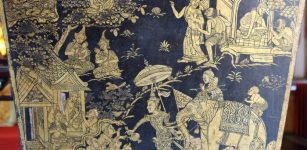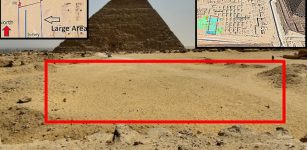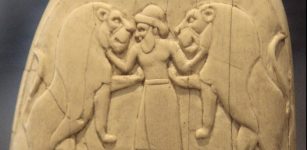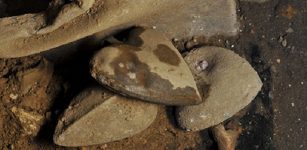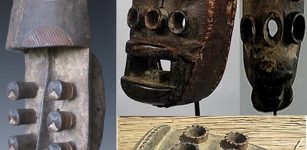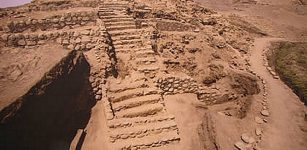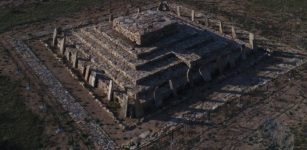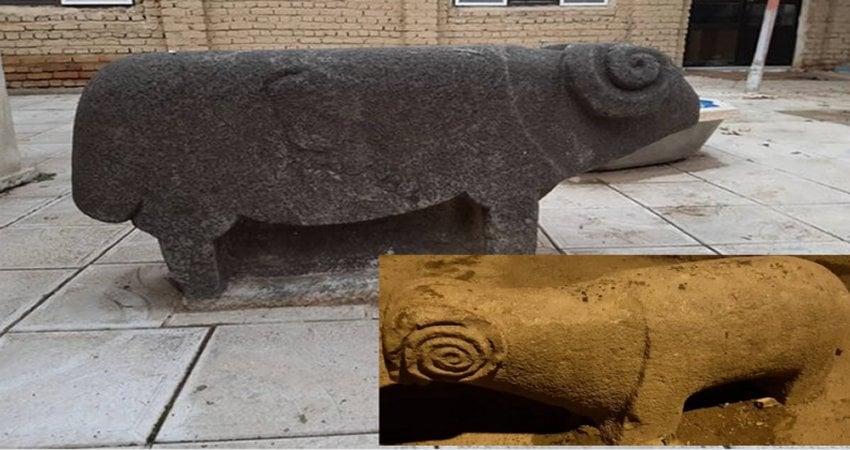Mystery Of The Stone Of Destiny Solved – It Was Originally A Doorstep!
Conny Waters – MessageToEagle.com – The Stone of Destiny, more commonly referred to as the Stone of Scone, is an enigmatic block of sandstone that has played a significant role in the coronation ceremonies of Scottish and English monarchs for centuries. This ancient artifact has been shrouded in mystery, and its origins give rise to various legends linking it to Biblical heroes and ancient Egyptian royalty.
The Stone of Scone is believed to have been used for the inauguration of Scottish kings as early as the 9th century. According to tradition, it was the stone upon which the legendary Scottish king, Fergus Mor mac Eirc, was crowned in Argyll in 498 AD. Over the centuries, it became an integral part of the coronation rituals, symbolizing the transfer of power and legitimacy to the new monarch.
Stone of Destiny. Credit: Historic Environment Scotland
In 1296, King Edward I of England captured the Stone during his invasion of Scotland and subsequently moved it to Westminster Abbey in London. It remained there for over 600 years, serving as the coronation stone for English and later British monarchs. However, in 1950, the Stone was famously stolen by Scottish nationalist students and briefly returned to Scotland before being recovered and returned to England.
The origins of the Stone of Scone remain a subject of debate and speculation. Some legends suggest that it was the stone used by Jacob as a pillow in the Biblical story, while others claim it was brought from Egypt by the Israelites during their exodus. Despite the uncertainty surrounding its provenance, the Stone of Destiny continues to hold immense historical and symbolic significance for both Scotland and England.
According to a new theory, the Stone of Destiny may originally have been a doorstep!
A recent analysis of the 335-pound stone conducted before its relocation from Edinburgh Castle to the newly opened Perth Museum last month revealed that the wear pattern on its top surface was likely caused by numerous people walking on it rather than by the weight of royalty sitting on or over it. The study examined the specific markings and erosion patterns, indicating that the stone’s surface was subjected to repeated ‘foot traffic’ over an extended period rather than the concentrated pressure of individuals seated upon it.
Scientists relied on digital technology that enables the scanning of surfaces, unveiling wear patterns on imperceptible steps to the naked eye. This wear pattern suggests a prolonged history of non-coronation usage, potentially serving as a step for a monumental structure like an early church or even a Roman building.
Coronation Chair With Stone of Scone. Image licensed under Creative Commons by Cornell University Library
According to Historic Environment Scotland (HES), the significant wear observed on the top surface of the Stone, identified as resulting from its use as a step, must have occurred before 1296, when King Edward I of England removed it from Scotland. This level of erosion also predates the Stone’s subsequent role in inauguration ceremonies, indicating its extensive use before these historical events.
“While we know some inauguration rituals did involve the individual being inaugurated to step onto the stone, such as at Dunadd Hillfort, the level of wear on the Stone of Destiny doesn’t support such use.
Even several hundred years of such a ritual wouldn’t create the level of wear we see. It’s more likely that the stone had earlier served as a step, although we don’t know the context for this,” Dr Nicki Scott, Senior Cultural Significance Advisor at HES, said.
“The evidence is quite compelling. It means that, at some point, the Stone was repurposed as an inaugural throne.
The earliest detailed account of a royal inauguration that we have is Alexander III’s in 1249, where the Stone is referred to as covered by ‘silk cloths woven in gold’, which means that its rather bare and worn appearance would not have been visible.
Once it became the inaugural throne it would be understandable if new legends were fashioned to ‘explain’ its association with the kingship as an ancient one — legends which, unfortunately, have obliterated whatever tales were told about its original significance before it became the inaugural Stone,” Professor Dauvit Broun, Chair of Scottish History at the University of Glasgow, who contributed to the new interpretation at Perth Museum, said.
Stone of Destiny at the Perth Museum. Credit: Perth Museum
The origins of the Stone of Destiny, also known as the Stone of Scone, remain shrouded in mystery, with no surviving credible accounts that could shed light on the scientific findings. However, numerous legends and rumors have circulated for centuries, suggesting that replicas of the stone were created at various points in history to deceive authorities.
One such legend claims that the monks at Scone Abbey concealed the original Stone of Destiny as King Edward I approached and that the king took a replica back to England. Another tale suggests that the real Stone of Destiny may be on display in a pub in Glasgow.
See also: More Archaeology News
After the coronation of Charles III, the stone did not return to Edinburgh but instead made its way to its ancient homeland in Perth for the first time in 700 years. It now serves as the centerpiece of the new Perth Museum, allowing visitors to marvel at this enigmatic artifact steeped in Scottish history and lore.
Written by Conny Waters – MessageToEagle.com – AncientPages.com Staff Writer



